| Premium midsize SUV; Built in USA |
|
|
| Good condition price range: $4,200 – $13,900* |
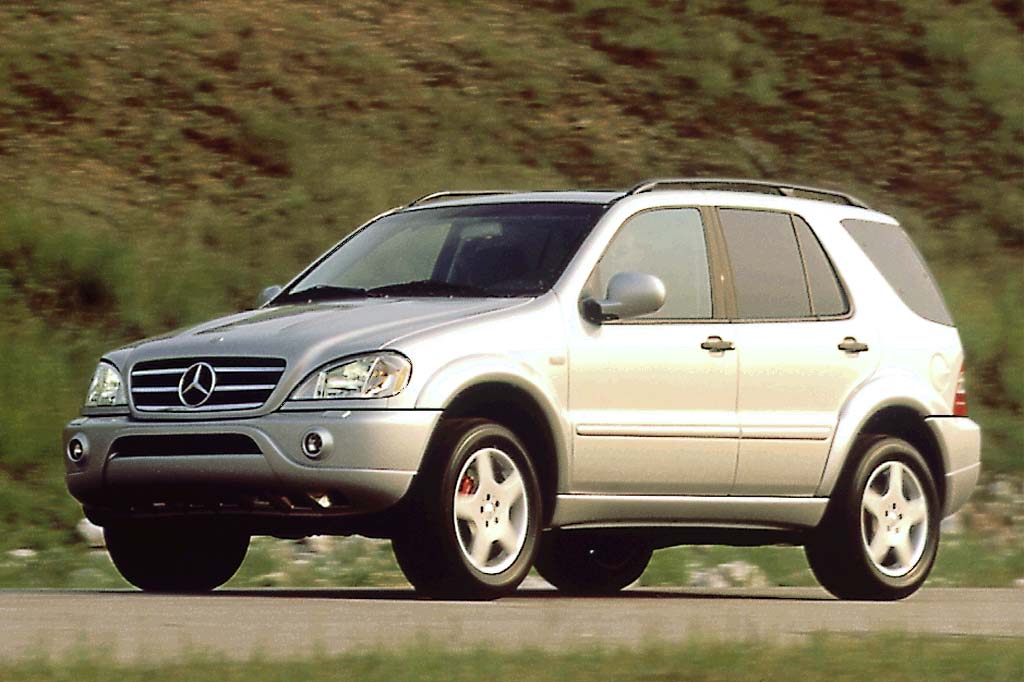
2000 Mercedes-Benz ML55
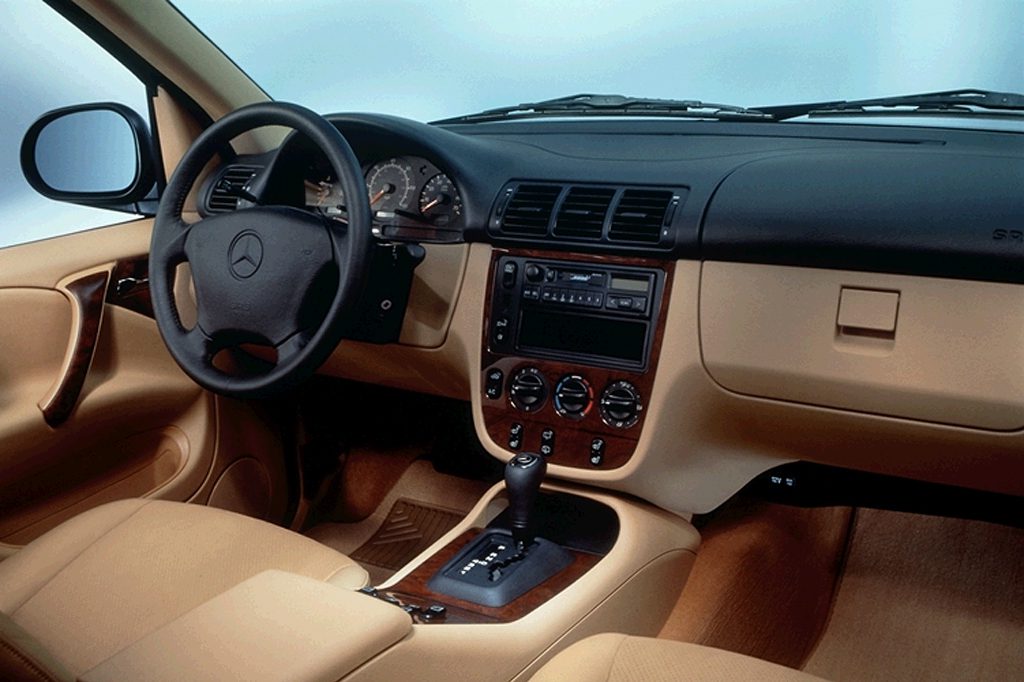
1999 Mercedes-Benz M-Class interior
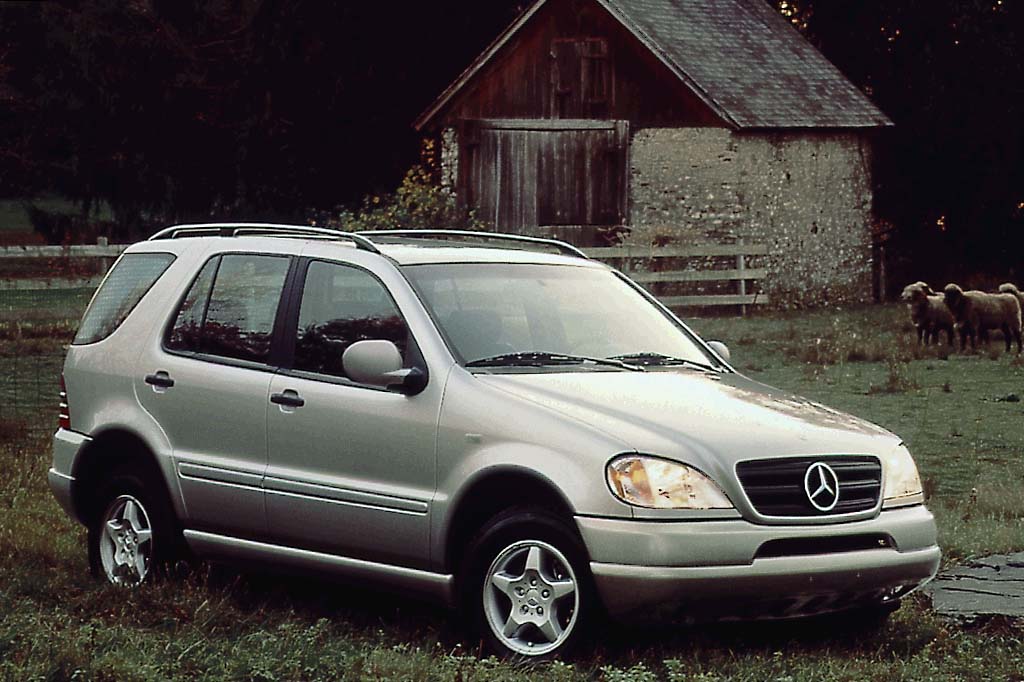
2000 Mercedes-Benz ML320
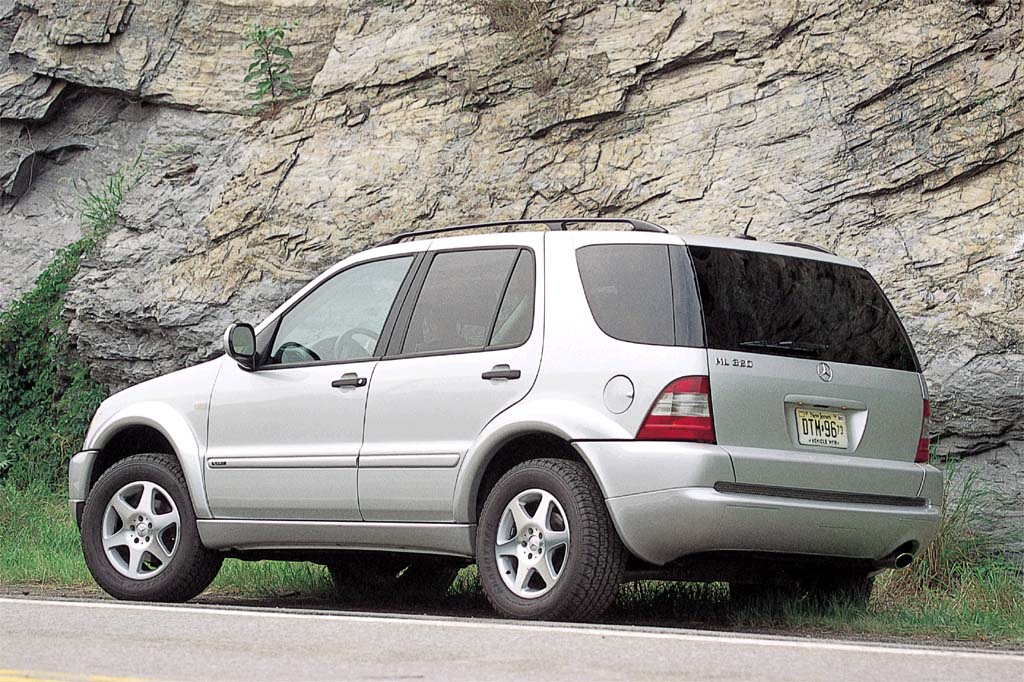
2001 Mercedes-Benz M-Class
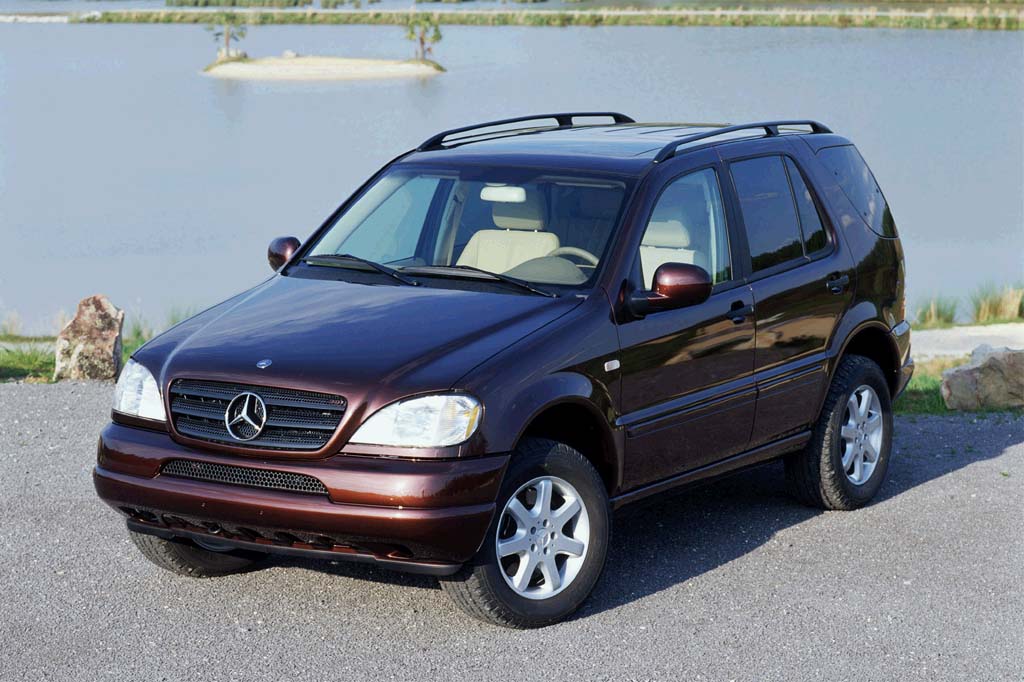
2001 Mercedes-Benz M-Class
| Pros: |
|
| Cons: |
|
Mercedes leads the true-SUV pack for its blend of refinement, handling, overall competence, and carlike convenience. Strong resale values keep prices high. Over time, competitors SUVs have overtaken the M-Class in refinement and luxury, but only a Range Rover offers more off-road prowess with this level of on-road competence.
Overview
The new Mercedes-Benz M-Class (ML320) was actually the German luxury automaker’s first sport-utility vehicle. It was also the first Mercedes model built in America.
Designed from scratch, the four-wheel-drive midsize SUV used body-on-frame construction, but stood apart from the pack of truck-based models due to its fully independent suspension. Mercedes-Benz’s first V6 engine went under the hood: a 3.2-liter, making 215 horsepower and coupled to a 5-speed automatic transmission. The V6 drove all wheels via front, center, and rear differentials. Unlike couplings on locking differentials on most SUVs, Mercedes’ “4ETS” system used antilock braking and traction-control sensors to direct power to the wheels with the greatest amount of grip. Power normally divided 50/50 front/rear, but could be automatically directed to any combination of wheels–or just one wheel if need be–to maintain traction. Separate low-range gearing could be engaged using a dashboard button. Offered in just one well-equipped model, the ML320 had seating for five and door-mounted front side airbags. Options included a power moonroof, Class III 5000-pound trailer hitch, and an “M1” package with leather and wood interior trim.
Yearly Updates
| 1999 M-Class For the second season of Mercedes’ SUV, an ML430 with V8 power joined the original ML320. The ML430 was distinguished by body-colored bumpers and side moldings, had 17-inch wheels instead of 16-inch, and featured standard wood interior trim. A new Skyview Top, optional on both models, was a louvered sunroof that provided a nearly 4-foot opening. Both models got Brake Assist, which automatically applied full braking force in emergency stops. Also new were the ESP (Electronic Stability Program) antiskid system and a BabySmart child-seat recognition feature. |
| 2000 M-Class Rear side airbags became standard for 2000, and a 2-place third-row seat could be installed for 7-passenger capacity. Revised interior appointments included new door panels, lower-dashboard padding, and a leather gearshift knob. Wood trim and a leather-covered steering wheel now were standard in the ML320 as well as the ML430. The ML320 also got the body-colored bumpers and mirrors from its V8 brother. The automatic transmission gained Touch Shift with a separate gate for easier manual gear selection. A new 5-inch video display in the dashboard controlled the audio system and a new navigation system (standard in the ML430). Also new this year was a high-performance limited-edition ML55 AMG model with a 342-horsepower, 5.4-liter V8 engine; low-profile tires on exclusive 18-inch wheels; and sport front bucket seats. AMG was the high-performance racing arm of Mercedes-Benz. |
| 2001 M-Class Hill Descent Control, a “downhill traction-control” system, was new this year. It automatically limited vehicle speed when descending steep grades. Four lower-body side airbags were standard, and dashboard airbags now deployed with full or partial force, depending on impact severity. The standard TeleAid system expanded to provide vehicle diagnostics, door unlocking, and alarm-system monitoring, in addition to communications/emergency assistance. |
| 2002 M-Class Mercedes-Benz’ sport-utility vehicle gained freshened styling, side curtain airbags, and a more-powerful V8 engine for 2002. Replacing the ML430 is a new ML500 with a 288-horsepower 5.0-liter V8. Automatic climate control and a new center console graced interiors of all models. |
| 2003 M-Class The only change of note for ’03 was the addition of an optional DVD-based navigation system. |
| 2004 M-Class Bse engine is now a 3.7-liter V6 that makes 232 horsepower. Curiously, Mercedes calls the model the ML350. Dropped for ’04 is the high-performance ML55. |
| 2005 M-Class The addition of a special-equipment trim package helps bring down the curtain on the 1998-2005 design generation of this SUV. A redesigned M-Class is due for model year 2006. The new equipment option is called the Special Edition. Available on both models, it includes among its exclusive features unique wheels, a “power dome” hood, silver-painted grille, polished aluminum roof rails, darkened taillamps, sport seats, and special badging. |

